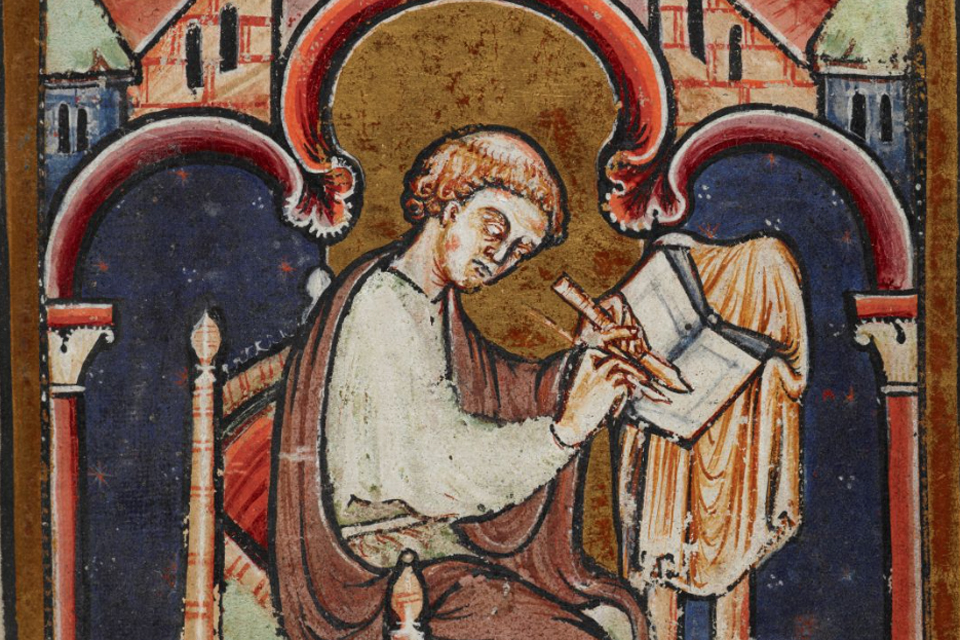Each year, hopeful young scholars publish their theses on Medieval History as well as archaeology, literature, art. The following list is not comprehensive. But we register what we find with links to the depositories
2024
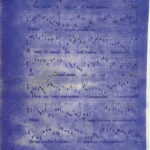 Scraping Beneath the Surface: The San Lorenzo Scribe Looking Backwards and Forwards at the End of the Trecento
Scraping Beneath the Surface: The San Lorenzo Scribe Looking Backwards and Forwards at the End of the Trecento
By Christina Dioguardi
Brandeis University ProQuest Dissertations & Theses, 2024. 31559524.
The San Lorenzo Palimpsest, formally known as Manuscript 2211, serves as a catalogue of property acquisitions for the Basilica di San Lorenzo; however, barely visible ink residue on its surviving parchment leaves points to a different original purpose. For centuries palimpsests have obscured information of immeasurable importance beneath their surface texts; information that, when unearthed, has the potential to completely reframe history. The dissertation makes advances in understanding the makeup and content of the San Lorenzo Palimpsest, both in terms of its production process, and also in revealing the importance of repertories that have been little considered to date (or not considered at all) in scholarship on the trecento (1300s in Italy). Furthermore, this dissertation makes a larger impact beyond musicology in providing a critical lens for how the humanities should examine palimpsests, and also in identifying where additional technological advancements are still crucial for the development of manuscript recovery.
Power Couples: The Substance and Representation of Royal Power in England, 1272-1377
By Tullis, Tatum
University of North Carolina at Chapel Hill 2024
 This dissertation analyzes royal power in medieval England through the lens of ‘power couples’: married pairs of kings and queens who worked both together and as individuals to preserve and expand the power of the crown. It utilizes narrative sources, such as chronicles and letters, which have often been ignored in favor of bureaucratic evidence such as government documents. Moreover, narrative sources provide an opportunity for a more in-depth analysis of the norms and expectations medieval people had for their rulers. By first examining how kings and queens built up their power and then investigating how they maintained it in the face of events which threatened royal authority, this dissertation takes a comparative angle to understand the continuities and changes of royal power dependent upon gender and time. Ultimately, it argues that both kings and queens used aspects of reputational power and actual power to maintain and expand their authority, and that their positions were almost always sufficiently robust to withstand forces seeking to undermine or overthrow them. Chapter One serves as the foundation for the rest of the dissertation by explaining the different methods kings and queens used to gain and express their power. Chapter Two examines the threats rulers faced from continued instances of political dissent and revolt. Chapter Three analyzes how the complexities of war affected royal power, and how kings and queens were able to harness victory and spin defeat to their advantage. Finally, Chapter Four discusses the effects of ageing and moments of transition on how much kings and queens were able to access power. Taken together, these moments of disruption illustrate how rulers, working individually or together as ‘power couples’, were able to maintain the authority of the crown.
This dissertation analyzes royal power in medieval England through the lens of ‘power couples’: married pairs of kings and queens who worked both together and as individuals to preserve and expand the power of the crown. It utilizes narrative sources, such as chronicles and letters, which have often been ignored in favor of bureaucratic evidence such as government documents. Moreover, narrative sources provide an opportunity for a more in-depth analysis of the norms and expectations medieval people had for their rulers. By first examining how kings and queens built up their power and then investigating how they maintained it in the face of events which threatened royal authority, this dissertation takes a comparative angle to understand the continuities and changes of royal power dependent upon gender and time. Ultimately, it argues that both kings and queens used aspects of reputational power and actual power to maintain and expand their authority, and that their positions were almost always sufficiently robust to withstand forces seeking to undermine or overthrow them. Chapter One serves as the foundation for the rest of the dissertation by explaining the different methods kings and queens used to gain and express their power. Chapter Two examines the threats rulers faced from continued instances of political dissent and revolt. Chapter Three analyzes how the complexities of war affected royal power, and how kings and queens were able to harness victory and spin defeat to their advantage. Finally, Chapter Four discusses the effects of ageing and moments of transition on how much kings and queens were able to access power. Taken together, these moments of disruption illustrate how rulers, working individually or together as ‘power couples’, were able to maintain the authority of the crown.
Queens of Heaven and earth: Marian devotion and Aristocratic Culture in twelfth-Century France.
By Anna Schlender Lukyanova.
University of North Carolina at Chapel Hill 2024
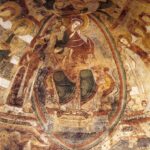 This dissertation investigates the construction and practice of female power in the twelfth century through a study of a multi-generational clan of queens and countesses from northern France and Flanders and their experiences in the broader context of aristocratic culture. The experiences of these women as daughters, wives, mothers, widows, and rulers are compared to contemporary depictions of queens and other elite women found in courtly literature, especially the romances of Chrétien de Troyes, and devotional material dedicated to the Virgin Mary, including Psalter images and sermon literature. The comparative and interdisciplinary methodology of this project addresses two interrelated issues currently facing the study of elite, premodern women: first, the perception that, as a rule, elite women did not wield power and that only the exceptional few did so, and second, that the framing of women’s power as exceptional is exacerbated by a relative paucity of sources written by or about women. Together, these problems obscure the integral roles women played in medieval institutions of power, such as monarchy and the aristocratic family. This dissertation argues that medieval women were integral to medieval monarchy and the aristocratic family, and that most elite women, not only the exceptional few, drew upon a discourse of female power that was primarily informed by ideas about the Virgin Mary as the archetypical queen and perfect woman. This discourse provided elite women with strategies with which they could draw upon at all stages of their lives and existed beyond the privileges afforded to them by their rank.
This dissertation investigates the construction and practice of female power in the twelfth century through a study of a multi-generational clan of queens and countesses from northern France and Flanders and their experiences in the broader context of aristocratic culture. The experiences of these women as daughters, wives, mothers, widows, and rulers are compared to contemporary depictions of queens and other elite women found in courtly literature, especially the romances of Chrétien de Troyes, and devotional material dedicated to the Virgin Mary, including Psalter images and sermon literature. The comparative and interdisciplinary methodology of this project addresses two interrelated issues currently facing the study of elite, premodern women: first, the perception that, as a rule, elite women did not wield power and that only the exceptional few did so, and second, that the framing of women’s power as exceptional is exacerbated by a relative paucity of sources written by or about women. Together, these problems obscure the integral roles women played in medieval institutions of power, such as monarchy and the aristocratic family. This dissertation argues that medieval women were integral to medieval monarchy and the aristocratic family, and that most elite women, not only the exceptional few, drew upon a discourse of female power that was primarily informed by ideas about the Virgin Mary as the archetypical queen and perfect woman. This discourse provided elite women with strategies with which they could draw upon at all stages of their lives and existed beyond the privileges afforded to them by their rank.
The Manuscript Circulation and Use of Bede’s Martyrology and Religious Practice in Carolingian and Post-Carolingian Europe, to c. 1250
By Falardeau, Kate
University of Cambridge 2024
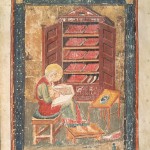 Bede’s Martyrology is the earliest known historical example of a calendrical list of martyrs, or martyrology, composed by Bede c. 725–731. All surviving manuscript copies are Continental and date to the ninth century or later. Historical martyrologies were popular in ninth-century Francia. Thus far, most scholars have focussed on Usuard’s Martyrology (c. 850–879), which would eventually form the basis of the modern Roman Martyrology. The nature of the so-called Carolingian reforms has been reconceptualised in recent scholarship. The role of liturgical manuscripts within this context has also received renewed analysis. Following these historiographical developments, the manuscript circulation and use of Bede’s Martyrology provide a case study for the application and long-term effects of Carolingian correctio. I examine manuscript copies of Bede’s Martyrology to clarify ninth-century developments in religious practice and their consequences.
Bede’s Martyrology is the earliest known historical example of a calendrical list of martyrs, or martyrology, composed by Bede c. 725–731. All surviving manuscript copies are Continental and date to the ninth century or later. Historical martyrologies were popular in ninth-century Francia. Thus far, most scholars have focussed on Usuard’s Martyrology (c. 850–879), which would eventually form the basis of the modern Roman Martyrology. The nature of the so-called Carolingian reforms has been reconceptualised in recent scholarship. The role of liturgical manuscripts within this context has also received renewed analysis. Following these historiographical developments, the manuscript circulation and use of Bede’s Martyrology provide a case study for the application and long-term effects of Carolingian correctio. I examine manuscript copies of Bede’s Martyrology to clarify ninth-century developments in religious practice and their consequences.
In the first chapter of the dissertation, I focus on the compilation of Bede’s text and the attribution of manuscript copies. In chapter two, I discuss one component included in top-down efforts at reform, the use of a martyrology in chapter, to ascertain the extent to which manuscript copies of Bede’s Martyrology reflect the prescriptive sources. In chapter three, I analyse correctio in the localities through the use of Bede’s text by ninth-century bishops and local priests in education and pastoral care. In chapters four and five, I examine copies of Bede’s Martyrology in the former Carolingian lands and Montecassino and Rome, respectively, to characterise uses of the Carolingian inheritance 900–1250. I argue that the presentation, circulation, and use of manuscript copies of Bede’s Martyrology reveal not only the entwined liturgical creativity and historical consciousness of ninth-century Carolingian Francia but also the subsequent influence of Franco-Roman liturgical practice in the Latin West.
2022
A Language of Snakes: Supernatural Objects in Viking Age Scandinavia
By Andrea C. Snow
College of Arts and Sciences, Department of Art, Art History Program
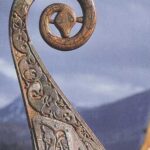
From the late-eighth through the early-twelfth centuries, the Germanic people of medieval Scandinavia (colloquially known as the Vikings) crafted enigmatic objects that were bound to a cultural acceptance of the supernatural. The material world was fundamentally linked to such a perspective: believing that things like carved pieces of bone and wood, metal apparatuses, and stone sculptures could hold or manipulate the unseen forces of the cosmos, they perceived the material world as alive, active, and powerful. Thus, crafted matter was not limited to aesthetically pleasing décor or functional tools—it was an agent through which the commingling of the sacred and the secular was made tangible. Scholars of medieval religion and history have argued that this worldview—dubbed a “magical way of thinking”—was intrinsic to the mindsets of the Scandinavian Middle Ages both before and after the region’s conversion to Christianity. Yet, despite the attention that medieval art historians have paid to the relationships between objects and beliefs in a supernatural (or divine) Other in contemporaneous, Abrahamic religious contexts, the art and material culture of the group at hand have been underserved. Substantial interpretive work needs to be done to untangle how these objects were connected to the uncanny. Asking not only how objects were embedded in supernatural power, but also through which methods were they endowed with such power and in what contexts it manifested, this project uses archaeological and textual evidence to formulate a new, art-historical framework for understanding the agency that this society assigned to the material world. Its aims are twofold: one, to suggest new routes for interpreting and understanding its relationship with crafted objects, and two, to push for further expansions in how these people are considered in scholarship and, eventually, in popular culture.
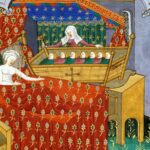 ‘It was greatly feared that the queen was barren’: perceptions and management of royal fertility in thirteenth- and fourteenth-century England and Scotland
‘It was greatly feared that the queen was barren’: perceptions and management of royal fertility in thirteenth- and fourteenth-century England and Scotland
By Emma Trivett
Edingburgh University 2022
Scholars of kingship and queenship have long acknowledged that producing an heir was an expected duty for medieval queens and kings. Indeed, motherhood has been a focal point in medieval queenship scholarship since the field’s beginning in the 1980s. Scholars have explored the gendered ideal of queenship and shown that maternity was a key function of the king’s wife that enabled medieval queens to exert political influence. Recently, scholars have considered how queens without children were still able to successfully execute their role, by substituting social motherhood and other facets of queenship, like intercession and religious patronage, in place of biological motherhood. Kings needed heirs, but gendered analysis of kingship has been slower to develop than work on other medieval men, or queens, and while fatherhood has received some attention in relation to medieval masculinity, there is less study of the significance of successful fertility for the gendered role of medieval kings.
This thesis fills a space that exists between the work on medieval kingship, queenship and the nuanced approaches that are being developed in the new history of infertility. The conventional understanding of ‘infertility’ as the inability to conceive is limiting, and excludes incidences of secondary infertility, sub-fertility and other uncertainties of reproduction. This thesis investigates the significance and pressure for fertility on kings and queens, by focusing on how royal couples in thirteenth and fourteenth-century England and Scotland, many of whom were not always childless or conventionally infertile, still experienced reproductive difficulties and managed their fertility. The analysis is divided into four chapters, structured around questions about when and why royal childlessness was problematized, and how fertility problems and reproduction were managed by royal couples. The first chapter examines contemporary impressions of the royal couples’ fertility and expressions of concern about childlessness. It investigates how royal fertility was written about by chroniclers and uncovers attention to couples’ fertility which has been missed by scholarship because many of the couples ultimately did have children. It considers chroniclers’ association of reproduction with queens and argues that perceptions of the kings contributed to what chronicles state about royal fertility.
The second chapter identifies a pattern of behaviour in the devotional practices of three childless kings, and exposes a connection between the king’s behaviours, age and concerns about childlessness. This chapter suggests that royal couples experienced scrutiny of their fertility when the king reached the perfect age associated with masculine maturity in the male life course. The third chapter traces evidence of royal medical care and asks how we might identify reproductive medicine in payments to physicians and connections to medical practitioners and texts. The chapter illustrates key patterns in royal healthcare to illuminate how royal couples medically managed fertility. It argues that royal healthcare was gendered, and reproductive medicine was focused on the queen, but queens had an influential role in the transmission and control of the medical care accessed by the royal couple. The fourth chapter examines the spiritual practices used by royal couples to manage reproduction and remedy fertility problems. It argues that the spiritual practices for reproduction were carefully chosen communications to control perceptions of a couple’s fertility, while the spiritual management of fertility was used by couples to communicate broader politically significant messages too.
Ultimately, this thesis examines the pressure for fertility experienced by royal couples, and how they navigated this using medical and spiritual support. It moves on from questioning how queens and kings navigated their gendered role in the absence of reproduction and uncovers the significance of fertility for contemporary perceptions of kingship and queenship. It shows how the uncertainties of reproduction affected and were managed by kings and queens, but in different and gendered ways. Ultimately, the thesis demonstrates that a more open analysis of infertility is necessary for understanding with greater precision the experience of childlessness, and the importance of fertility for both gendered roles of kingship and queenship.
2021
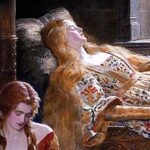 The Transformation of the Sleeping Corpse Motif in Medieval and Early Modern Literature
The Transformation of the Sleeping Corpse Motif in Medieval and Early Modern Literature
By Rachel Fennell
Durham University 2021
This thesis traces how the enchanted sleep motif common to both ATU 410 (Sleeping Beauty) and ATU 709 (Snow White) exists in the Bible and hagiography, before charting its subsequent appearance in medieval and early modern literature. Categorising the enchanted sleep and its various facets as the motif of the ‘sleeping corpse’, this thesis considers how two fairy tales, which appear to model Victorian patriarchal ideals of female passivity and male agency, have complex earlier iterations that undermine and subvert many of their contemporary core problematic tenets. Chapter One explores how the sleeping corpse motif can be considered analogous to the presentation of deceased saints in hagiography, examining how a sleeping corpse can also be an active, powerful, and often deadly member of a community. Chapter Two explores the motif in medieval romance, including in the first recorded written version of Sleeping Beauty and its subsequent European versions, where the motif is often used as part of rape narratives. Chapter Three examines how Elizabethan pastoral romance presents the male sleeping corpse as a product of the failure to self-govern passion, whilst Chapter Four explores how Shakespeare uses the motif to unpack ideas of familial loss and reunion, though not restoration. Finally, Chapter Five demonstrates how Jacobean revenge tragedy rejects past iterations of the motif in favour of using the sleeping corpse to portray murder and necrophilia on stage. Drawing together a vast and original corpus of genres and time periods, this thesis offers new ways of understanding two traditionally maligned fairy tales, as well as demonstrating how the motif speaks to our desire to pause time, delay the inevitability of death, and obtain a type of immortality.
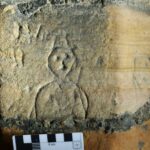 Landscapes of destination: An archaeology of the experiential and ritual behaviour of Medieval (12th to 16th century) English worshippers at religious centres.
Landscapes of destination: An archaeology of the experiential and ritual behaviour of Medieval (12th to 16th century) English worshippers at religious centres.
By Jamie Ingram
Thesis for the degree of Doctor of Philosophy
University of Southampton Faculty of Arts and Humanities Archaeology and Anthropology
This thesis utilises the data sets provided through the recording of historic graffiti within secular and religious buildings to analyse and draw a theoretical understanding of behaviour within Medieval Christian religious practice during a period of intense pilgrimage activity. The work focuses on the South of England and questions the nature of personal religious engagement within the church and cathedral specifically looking at the methods used by lay worshippers to gain independent access to the divine. To facilitate this study large volume of historic graffiti data has been recorded in Hampshire, Wiltshire, and West Sussex. This data has been analysed using geostatistical models to assess distribution and relative nearness of the marks to both known points within the built environment and to neighbouring marks. This data has then been compared to existing literary and historical texts to understand how the marks have interacted with personal prayer practice and the built landscape. The outcome of this study has been the generation of a theoretical framework that describes one form of interaction using graffiti as ritual doing within the generation of personal rituals of encounter that facilitate the exploration of a complex nested ontology within the built landscape. This nested ontology provides access to the divine in a ritually safe manner and permits lay worshippers to navigate the spiritual dangers an encounter with the divine without the guidance of a ritual authority.
2020
DECEMBER
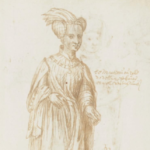 Tussen twee dynastieën : Margaretha van Bourgondië, gravin van Henegouwen, Holland en Zeeland
Tussen twee dynastieën : Margaretha van Bourgondië, gravin van Henegouwen, Holland en Zeeland
By Brandsma, M.
Doctoral Thesis
Leiden University
Margaret of Burgundy (1374-1441) is known mainly for two reasons. Firstly, her marriage in 1385 to William of Bavaria, eldest son of the Count of Hainault, Holland and Zeeland, laid the foundation for the transfer of power in these principalities to the Burgundian dynasty some 50 years later. Secondly, she supported her only child Jacqueline of Bavaria, who fought many battles in order to prevent this. The combination of these two roles points to a conflict of interest. By supporting her daughter as the rightful Bavarian heir, Margaret inevitably came into conflict with members of her own dynasty of origin, the Valois Burgundians. The overarching question in the research presented in this thesis is what tilted the scales for Margaret as a political player in different phases of her life: was it her loyalty to the Burgundian or to the Bavarian dynasty, her connection with the Hook party in Holland, or was she driven mainly by self-interest, as is sometimes suggested? Related to this is the question whether her means were substantial enough to allow her to play her own game. In this biographical study, a chronological and a thematic approach have been combined. The loyalty question serves as guideline for the first part, in which the story of Margaret’s life is told chronologically within the broader context of political developments. The thematic second part is dedicated to her financial position as a widow, her court, and her religious and literary patronage.
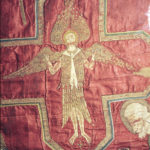 Opus anglicanum : the visual language, liturgical rituals, and gifting of a medieval English brand
Opus anglicanum : the visual language, liturgical rituals, and gifting of a medieval English brand
By Valentina Susanne Grub
Thesis, PhD Doctor of Philosophy
Art History Thesis, St. Andrew’s
In 1246, when Pope Innocent IV saw embroidered copes and mitres which were made in England, he exclaimed; “England is for us surely a garden of delights, truly an inexhaustible well; and from there where so many things abound…” Embroidery made between 1200-1350 in England, known as opus anglicanum, was internationally recognized, traded, gifted, collected, and coveted. The technical skill combined with a distinct aesthetic resulted in an iconic textile brand. Though first described as a brand in the context of contemporary imitated textiles, I extend this understanding by close visual analyses and archival readings. “Opus anglicanum: The Visual Language, Liturgical Rituals, and Gifting of a Medieval English Brand” argues for a quadripartite examination of the opus anglicanum brand, grounded in luxury brand theory. I articulate the technical and aesthetic hallmarks of the brand by examining archival records of embroiderers and the specific aspects of their work which differentiated opus anglicanum from other contemporary textile decorations. I then evaluate the opus anglicanum brand aesthetic by a close visual reading of its background designs and popular motifs, through which emerges the enduring relationship between manuscript illumination and embroidery design. As the majority of extant opus anglicanum textiles are ecclesiastic vestments, I then assess these textiles in the context of contemporary liturgical writings and rituals. As archival evidence indicates, opus anglicanum textiles were often presented as gifts. Therefore, I conclude by studying the effect of medieval English embroidery in the context of gift-giving rituals. This dissertation, while grounded in both medieval and modern scholarship, reevaluates these textiles and argues that the enduring legacy of opus anglicanum is due to its identity as a medieval brand.
OCTOBER
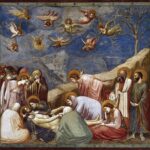 Self-representation in the three-dimensional arts: a study of Italia and Germania, CA 800 – CA 1200.
Self-representation in the three-dimensional arts: a study of Italia and Germania, CA 800 – CA 1200.
By Mariia Ivanovna Gordusenko
Edingburgh University
SEPTEMBER
 Patterns of Power, Power of Patterns: Exploring Landscape Context in the Borderland of the Northern and Central Welsh Marches, AD 300-1100. (Doctoral dissertation).
Patterns of Power, Power of Patterns: Exploring Landscape Context in the Borderland of the Northern and Central Welsh Marches, AD 300-1100. (Doctoral dissertation).
By Garry Duckers
University of Chester, United Kingdom.2020
Scholarship regarding the early medieval Welsh Marches is frequently disparate and disjointed. Studies have concentrated on the analysis of monuments, in part because of the paucity of early medieval archaeology upon which to create a tableau conducive to macro landscape-based research. Where syncretic works in the Welsh Marches have attempted to adopt an interdisciplinary approach, they are often dated, not embracing, or utilising new techniques or methods. This is exacerbated by approaches in archaeological remotes sensing that have focused on methods or only producing dots and lines on a map, rather than its application and integration into theoretical frameworks widening further the divide between theory and practice. Combined, these approaches also fail to integrate fully within discourses emerging in border studies, a critical field of study when analysing border regions. To tackle these challenges, this thesis examines the borderland landscape of the North and Central Marches using traditional geographical and archaeological techniques, combined with GIS and remote sensed methodologies such as lidar to offer new insight into processes of power and how that is reflected in the landscape. This research targets not only landscape morphology but embraces border theory on the expression and apparatus of power emphasising the ‘borderland’ as an active agent in territoriality and social processes. This study has analysed remote sensed data and data sets that have previously been underutilised and combined theoretical concepts into a holistic body of work. New or misinterpreted archaeological sites have been identified, adding to the archaeological knowledge of the region and facilitated an enhanced picture of the early medieval landscape. In addition, the interrelationship of boundaries and sites hitherto unrecognised in the Welsh Marches have collectively opened new avenues and concepts to underpin and augment further research on dyke systems and border formation processes.
 Who Stole the Water? The Control and Appropriation of Water Resources in Medieval Hungary
Who Stole the Water? The Control and Appropriation of Water Resources in Medieval Hungary
By András Vadas
Submitted to the Medieval Studies Department, Central European University, Budapest in partial fulfillment of the requirements for the degree of Doctor of Philosophy in Medieval Studies Budapest
Hungary Budapest, 2020
In this dissertation the problems surrounding water management, a space where different economic and other socio-political interests met and sometimes clashed are addressed. Modern politics focuses on who has legitimate rights to claims in such disputes, but for historians, it is certainly more relevant to understand how such conflicts were approached and resolved in the past by posing questions about how pre-modern societies dealt with these same problems. These questions include what kind of disputes unfolded with regard to the use of water and the degree to which water conceived as private or as ‘common’? How were different interests aligned with each other? In this dissertation these questions are raised in the context of Central Europe, and more particularly, in the Kingdom of Hungary in the Middle Ages (from the ca. tenth century to the mid-sixteenth century), i.e. the period of the re- appearance of literacy in the area after the Roman period. Throughout the different chapters of the dissertation it is argued that use of water by the societies of the Kingdom of Hungary in the Middle Ages gave rise to fairly complex sets of customs and norms that, until the Modern times, were the most important principles in settling water use related disputes.
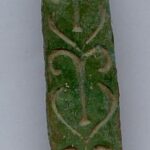 Art Metal Production in Early Medieval Bulgaria (according to the findings)
Art Metal Production in Early Medieval Bulgaria (according to the findings)
By Stella Milcheva Doncheva
Dissertation submitted to the Shumen University
Shumen 2020
Against the background of production traditions, there is an opportunity to trace the external cultural interactions, manifested in various forms. An example of a model of technological development in early medieval Bulgaria is the production centers for metal art, which functioned in the first half of the 10th century in the vicinity of Preslav. Each region of metalworking has a complex structure in which the individual production areas are often far apart. They function according to the developed system of exchange with the various metallurgical fields, where the connection between them is determined not so much by economic compliance as by the degree of culture and traditions. The regularly located complexes of workshops show the presence of proximity in the location of the individual production areas, which is influenced by the cultural development of the early medieval Bulgarian community and the synchronous time of functioning. Metalworking has considerable autonomy and this is especially evident in the various stages of the technological process. Its distinctiveness is expressed in the specialization of the blacksmith’s trade, the special social and public status of the masters, the nature of the productive and trade relations, etc. The production of artistic metal is characterized by its own traditions and its own path of development, reflected in the history of alloys, production technology, the typology of metal inventory and the system of concepts. Local traditions are refracted through the prism of general practice in the development of production. Often these are established principles in technology and the individual stages in it, which retain their stability over time and reach both the Middle Ages and the New Age, with minor changes as a result of technical progress.
The subject of research is the rich collection of belt sets, received from the archaeological excavations of the three centres for the production of metal art from the early Bulgarian Middle Ages near Preslav – near Novosel, Zlatar and Nadarevo. The finds of belt sets in the three centres are the most numerous and mass-produced products, the number of which so far exceeds 3000. Along with them, the finds from the production centres received in the museum collections before the excavations were examined. This applies primarily to the third production centre near Nadarevo, Targovishte region. The study aims to investigate the production of artistic metal in early medieval Bulgaria on the basis of the numerous production of belt sets, collected as a result of 20 years of research of the first known specialized centres for metal plastics. As a result of archaeological excavations from 2004 to 2009, the first centre was studied – the one near Novosel, Shumen region. From 2007 to the present, the second production centre near Zlatar, Preslav region, is being studied with a short break. The centre near Nadarevo, Targovishte region was partially explored in the 1990s within one season. The number of finds in the National Museum in Sofia and the museum collections from all over Northeastern Bulgaria prove the existence of large-scale and organized production, in parallel with that of the other two complexes.
FEATURED PHOTO:
Bede writing. Yates Thompson MS 26, © British Library
